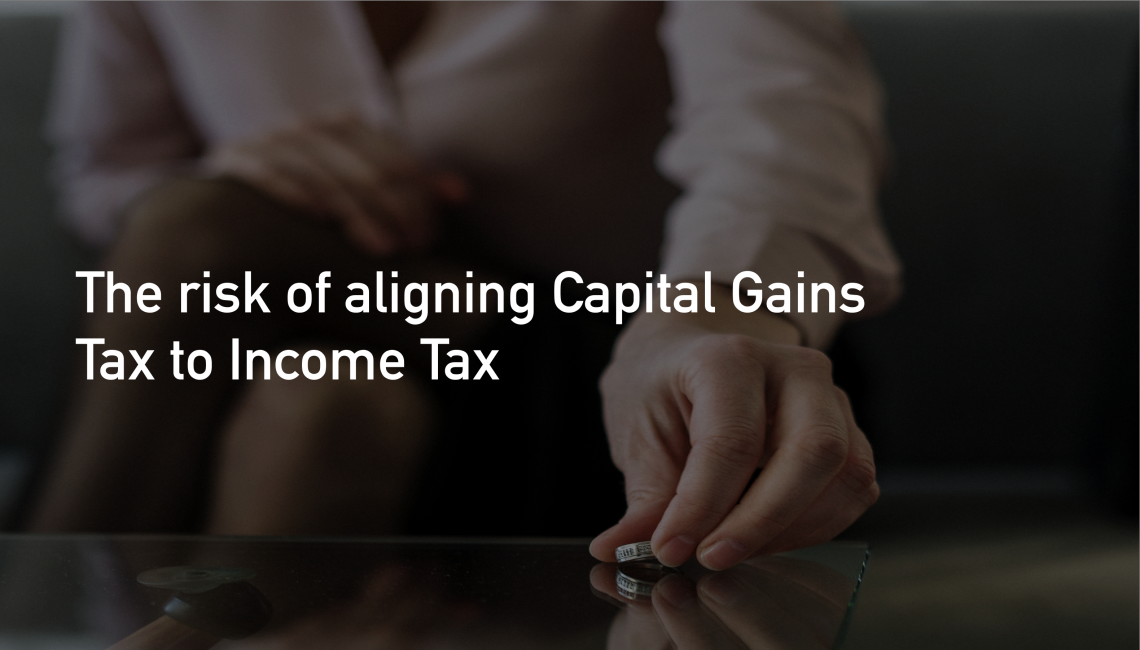
In the 2021-22 financial year, UK taxpayers paid a record £16.7bn in Capital Gains Tax (CGT) to HMRC, a tax on the profit when you sell an asset that’s increased in value. This marks a 15% year-on-year increase and a new record high.
Fast forward to April 2023, the Chancellor slashed the CGT allowance (the maximum amount that you can earn in profit before paying tax) from £12,300 to £6000, giving the Treasury an opportunity to beat its previous record for CGT receipts, before the allowance is reduced further to £3000 from April 2024.
With regular calls for the rates of CGT to be aligned with Income Tax, Tim Walford-Fitzgerald, Private Client Partner at HW Fisher, outlines the potential pitfalls of this plan.
Income vs Capital Gains
We’ve seen many calls in the past for CGT rates to be increased so that they are the same as Income Tax. The rationale appears to be based on taxing someone’s overall returns rather than considering the character and commercial reality of how those returns arise.
Unlike income, which arises each year with generally little control over its timing, capital gains usually arise on the disposal of assets that have been held for a longer period. The tax system has historically recognised this fact and sought to reflect that reality in the way CGT is levied. This has variously been through reduced rates, simplifying the notion of a marginal rate of tax on the gains that had arisen over several years, or allowances and reliefs that increased over the period during which the gains had arisen.
If CGT rates match those applied to dividends, some business owners may seek to keep their tax rates within certain limits. This accelerates the tax collected by the Treasury but also results in commercial ramifications as the company builds up a debt to its shareholders, impacting on the balance sheet position and debt priorities that can affect the credit terms available to the company.
Whatever tax mechanism applies, it is important that the CGT regime does not act as an artificial distortion or disincentive to transactions.
The threat to the UK’s entrepreneurs and investors
Contrary to some commentators, entrepreneurs rarely found businesses in order to benefit from a low tax rate; they start them because they have a good idea and only then structure them to take advantage of the tax rules at that time. The same principles apply to the selection of investments, with risk being balanced against the post-tax return available.
Tax rules do however influence the timing of asset sales. It has been common practice for some people to sell and sometimes buy back shares around the tax year end to use the Annual Exemption where the tax savings outweighed the dealing costs. The Annual Exemption is the amount up to which you can make a profit from selling your assets without paying tax. Currently it stands at £6000 but it is set to half in April 2024 to £3000.
The practice of selling and buying back shares is restricted by specific rules about “bed and breakfast” sales and repurchases. Planning such as “bed and spouse” or “bed and ISA” can still allow tax-free gains to be realised, albeit with ever smaller benefit as the Annual Exemption is reduced.
If CGT rates are too high, there is a risk that investors will view the net return as too low and retain the assets instead of exiting. It is important for any business to have the right succession planning in place, with the ownership being passed on at the right time. These plans can naturally span several years. Speculation over increasing tax rates may result in those plans being formulated to fit a fiscal timetable, not necessarily the needs of the business.
Businesses need stability
We’ve had a busy two years of tax changes, and this has been challenging for businesses. It is certainty and not speculation that allows them to plan properly over business cycles and not to divert resources to consider a multitude of possible tax contingencies based on election cycles.
With the general election poised to take place next year, politicians should keep in mind that while they might prefer to keep their options open, having “no plans” does not inspire confidence in business owners possibly making decisions which will impact their futures well beyond the next ballot box.
If you are interested in speaking to Tim about your current situation, you can get in touch with him here.
We’d love to hear from you. To book an appointment or to find out more about our services: